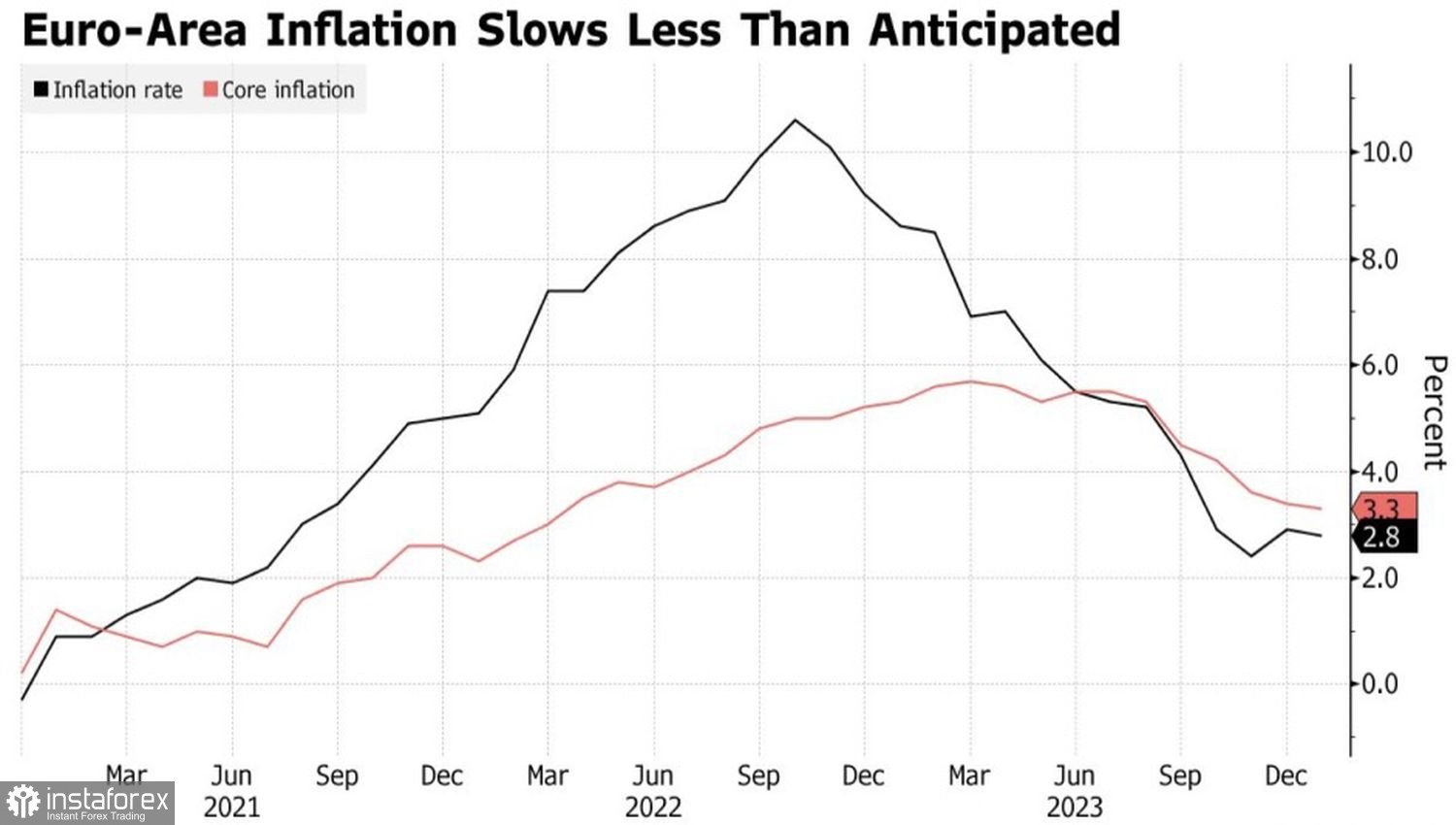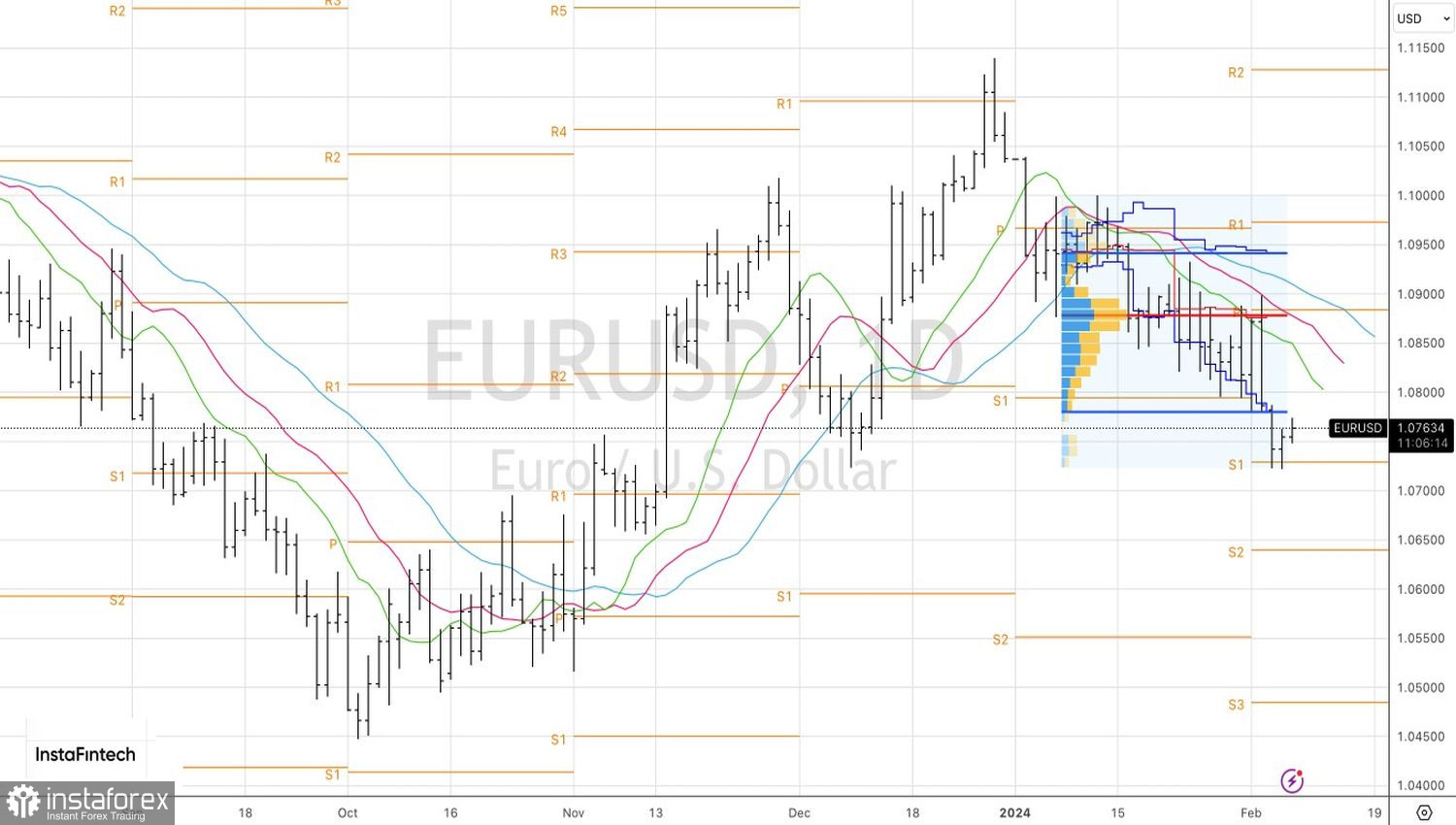The main market paradox at the start of 2024 is the simultaneous rally of the U.S. dollar with stock indices. Typically, the U.S. dollar is perceived as a safe-haven asset that rises during periods of turmoil, recessions, or natural disasters. However, the strong U.S. economy, indicated by the falling VIX volatility index, reflects a lack of fear among investors. Even the earthquake in Japan had a greater impact on the yen than on the USD index. In such conditions, can the EUR/USD experience a downturn?
Credit Agricole believes that the U.S. dollar is currently seen by the market not as a safe-haven asset but as a yield currency. The risk appetite is high, and positive surprises from the U.S. economy increase demand for trading on divergences. Unlike other major central banks worldwide, the Federal Reserve can not only lower, but also raise the federal funds rate in case of inflation acceleration. As a result, the attractiveness of dollar-denominated assets grows, and capital inflows into North America contribute to the peak of the EUR/USD. The U.S. dollar is particularly favored against low-yielding currencies such as the franc, yen, and euro.
Against this backdrop, the European Central Bank's (ECB) efforts to resist market expectations of a 150 bps rate cut to 2.5% in 2024 have secondary significance. According to ECB Executive Board member Isabel Schnabel, the last mile of combating high inflation will be the most challenging.
Dynamics of European Inflation

The official believes that high prices in the services sector, a strong labor market, softer financial conditions compared to before, as markets assess a larger scale of monetary expansion than expected by the ECB, and the conflict in the Red Sea can accelerate inflation. Ultimately, supply chain issues can resurface, raising the Consumer Price Index (CPI). In such a situation, the ECB should be patient and cautious, as historical experience shows that prices can reach a new peak.
Similar "hawkish" rhetoric and the unexpected 8.9% MoM rise in German manufacturing orders in December extended a helping hand to the sinking euro. If the German economy begins to recover, and the ECB does not rush to lower deposit rates, why wouldn't the EUR/USD start forming a bottom?

In reality, the fate of the main currency pair depends more on the strength of the U.S. economy, yields of U.S. Treasury bonds, and the timing and scale of the Fed's monetary expansion. Although markets have bid farewell to the idea of its beginning in March, all points over "i" are destined to be placed by the data on U.S. inflation for January.
Technically, after reaching the first of the two previously set target levels at 1.073 and 1.064, EUR/USD experienced a predictable rebound. The bulls counterattacked, but it is unlikely that their strength is sufficient to change the existing balance of power. Therefore, rebounds from the lower boundary of the fair value range at 1.078 and the pivot level at 1.081 make sense to use for selling.





















